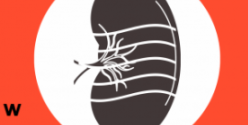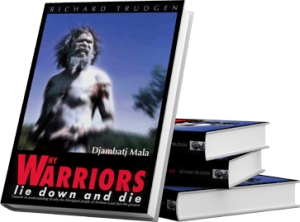Rev. Dr. Djiniyini Gondarra OAM, a senior Yolngu elder, is exhausted by the constant death rates of Yolngu people from preventable diseases in north-east Arnhem Land.
“All I do these days is attend funerals,” he says.
The coronavirus pandemic has opened up the need for improved telehealth and digital health resources that will ultimately help Indigenous people living in remote areas. The research team at Why Warriors, together with Rev. Djiniyini and Marcus Ilton, the Director of Cardiology at Royal Darwin Hospital, are working to develop culturally appropriate videos and teaching information to help with health literacy around heart disease issues.
Communication is the key to solving the heart of the health crisis – especially between remote Indigenous Territorians and people in mainstream healthcare. If English is the second or third language for many Indigenous people, then their understanding of medical concepts such as ‘the body’s need for oxygen’ and ‘circulation’ is not possible. Pamphlets and brochures, 1-1 appointments, preventative solutions and medication dosage information is all well and good, but without the underlying understanding of what heart disease is, from their own cultural standpoint, none of this will be adhered to.
For example, the Why Warriors coronavirus video series discusses ‘social distancing’ in relation to the goŋ-wukundi law, which is a Yolngu law in which Yolngu people are restricted in what they can do and where they can go, so they can understand similar mainstream government rules during the pandemic. In the same video series, the Yolngu phrase buwayak warrakan mala (‘an invisible group of animals or birds’) is used when referring to live disease agents like bacteria and viruses, so Yolngu people can picture in their minds how coronavirus spreads and reproduces.
Culturally appropriate and effective resources like this are rare. It is difficult for medical professionals to have enough worldview, cultural and linguistic knowledge for many different Aboriginal groups to be able to explain things to them in a clear way. Even Aboriginal health workers employed to bridge the cultural gap have great difficulty unpacking and understanding the language of medical professionals in the mainstream system. Thus resources in people’s own language with back translations in English would act as a communication conduit on both sides. Properly researched and accessible podcasts/ videos could be drawn upon to close the gap between medical professionals and their patients.
“Health literacy is a vital aspect of improving people’s understanding of how they can improve their own health outcomes,” states Marcus. Only through such accessible communication will Yolngu people be able to move forward with the information they need to take control of their own health and lives.
_________
For more information or to support the continuing research and development of resources by Why Warriors, please contact:
Richard Trudgen (founder): richard@whywarriors.com.au, +61 400 880 954
Keira de Hoog (media/ communications): keira@whywarriors.com.au



